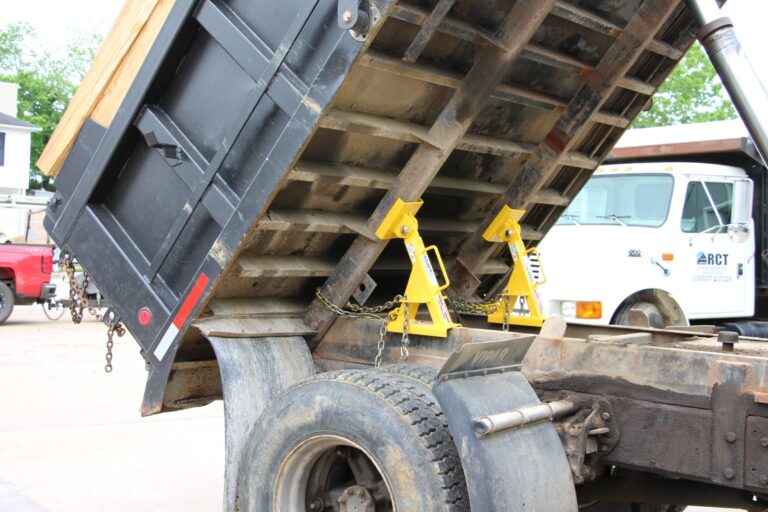Construction sites are dynamic environments where weather can change rapidly. While dump truck repairs are often crucial to keeping projects on schedule, prioritizing safety during outdoor repairs in various weather conditions is equally important.
Understanding how weather can impact outdoor truck repair safety and adapting your protocols accordingly is essential for protecting your technicians and ensuring a smooth repair process.
The Challenges of Outdoor Truck Repair
Performing truck repairs outdoors introduces a unique set of safety considerations compared to a controlled workshop environment. Here’s how weather elements can pose risks during outdoor repairs:
· Extreme Temperatures
Hot weather can lead to heat exhaustion or heatstroke, particularly when working in direct sunlight. Cold weather can cause hypothermia and impair dexterity, making it difficult to handle tools safely.
· Precipitation
Rain, snow, or sleet can create slippery surfaces, increasing the risk of slips and falls. Additionally, wet conditions can compromise electrical safety and damage exposed electrical components on the truck.
· High Winds
Strong winds can create unstable working conditions, making it difficult to safely handle tools or climb onto the truck bed. Windblown debris can also become a projectile hazard.
· Reduced Visibility
Heavy fog, rain, or snowfall can significantly reduce visibility, making it challenging to see potential hazards and increasing the risk of accidents.
Adapting Your Safety Protocols for Outdoor Truck Repair
By adjusting your safety protocols based on the weather forecast, you can significantly mitigate these risks and ensure a safe work environment for outdoor truck repairs:
· Hot Weather
Schedule repairs for cooler parts of the day if possible. Encourage workers to stay hydrated, take frequent breaks in shaded areas, and wear loose-fitting clothing made of breathable materials.
· Cold Weather
Provide insulated clothing and warm beverages for workers. Ensure proper lighting is available for low-light conditions. Consider using heaters to maintain a safe working temperature around the repair area, if feasible.
· Precipitation
If possible, reschedule non-critical repairs for better weather conditions. If repairs must be done in the rain, prioritize repairs under covered areas or utilize temporary shelters. Ensure proper drainage to prevent water from pooling around the work area.
· High Winds
Postpone repairs during high winds if safe work cannot be guaranteed. Secure any loose tools or equipment that could become projectiles.
· Reduced Visibility
If visibility is compromised, use additional lighting to illuminate the work area. Proceed with caution and prioritize clear communication between team members.
Additional Safety Tips for Outdoor Truck Repair
Here are some additional tips to promote safety during outdoor truck repairs:
- Perform a pre-repair inspection: Before starting any work, assess the weather conditions and identify potential hazards specific to the environment.
- Communicate effectively: Keep your team informed about the weather forecast and any necessary safety adjustments.
- Utilize proper equipment: Wear appropriate footwear with good traction to prevent slips and falls. Use extension cords with GFCI protection to minimize electrical hazards in wet conditions.
Prioritize visibility: Encourage workers to wear high-visibility clothing in low-light conditions or during heavy precipitation.

Weather the Storm with Confidence: Prioritize Dump Truck Repair Safety
Unpredictable weather shouldn’t compromise safety. BedLock Safety Products, LLC, a leading truck safety equipment manufacturer, offers innovative solutions like dump truck bed safety stands to enhance dump truck repair safety in any weather. Visit us today to explore our range and put safety first every day!
